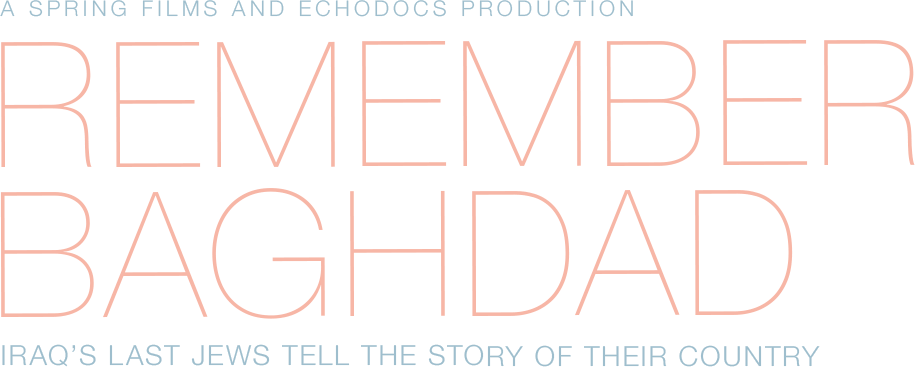-
Sura Academy, 5th Century Babylon, 20th Century relief, Beit Hatfutsot, the museum of the Jewish people, Tel Aviv
-
David Dangoor's great grandfather, Hakham Ezra Dangoor (b.1848), was the Chief Rabbi of Baghdad from 1923 to 1926
-
Hakham Ezra Dangoor also opened the first printing press in Baghdad in 1910, a time of learning
-
Hakham Ezra Dangoor with his family in Baghdad in 1910
-
Edwin Shuker wants to buy a house in Iraq to plant a seed of hope for the future
-
In 1921, Britain imposed the Hashemite King Faisal I
-
In 1932, the British mandate ended, making Iraq the only independent Middle Eastern country
-
David Dangoor’s mother Renée and her sister Joyce
-
During the 1930s, the German Nazi party courted opposition to the British in Iraq
-
Mein Kampf was translated into Arabic and radio propaganda from Berlin blared in market places
-
The slogan 'Allah in Heaven and Hitler on the ground' became familiar
-
In 1939 the Grand Mufti of Jerusalem came to Baghdad to inspire politicians and train young men
-
The Mufti's campaigns of violent popular resistance against the proposed Jewish State in Palestine were part funded by the Nazis
-
Zvooloon Hareli (lying down left) was head of the Zionist defence plan for a district of Baghdad during the 1940s
-
For 25 years the Dangoor family (pictured in 1939) were at the centre of an exciting nation-building period in Baghdad
-
As a child, Eileen Khalastchy's life in Baghdad was idyllic until a sudden acid attack in 1941
-
Winston Churchill was determined to hang onto Iraq to control the country's oil reserves and the route to India
-
Victorious British soldiers look across the Tigris at Baghdad, 1941
-
In June 1941, a Nazi-inspired pogrom erupted, known as the Farhud. 180 Jews were killed and 2,000 were injured.
-
In 1947 Renée Dangoor was crowned Miss Baghdad in the country's first beauty contest
-
David Dangoor’s mother, Renée
-
In 1951, 95% of the Jewish population signed up to be airlifted to Israel in Operation Ezra & Nehemiah, a project financed by American Zionists
-
120,000 Iraqi Jews abandoned their homes to fly six-hundred miles West to Tel Aviv
-
Esperance Ben-Moshe's family were not Zionists, but they joined the airlift in a panic. They fled penniless.
-
The 1950s were a seemingly golden period for Iraq's remaining Jews. Life in Baghdad was deceptively secure.
-
The Dangoors attended fancy parties and picnics on the Tigris with the elite
-
Renée Dangoor joins a picnic in the early 1950s
-
The early 1950s were carefree
-
Architects including Le Corbusier, Walter Gropius, Alvar Aalto and Gio Ponti were invited to build projects in Baghdad during the 1950s
-
Baghdad in the 1950s
-
Naim Dangoor worked as an engineer on the King Faisal II Bridge, completed by British contractors in 1937
-
David Shamash's parents were part of a prominent Baghdadi family (pictured in 1953)
-
David Shamash with his father, who was an Iraqi MP
-
In 1958 the monarchy was overthrown by Abd al-Karim Qasim in a military coup
-
Saddam Hussein was a young officer behind the Ba'athist coup that followed in 1963
-
Jewish passports were withdrawn in 1963. Edwin Shuker and his siblings' ID is pictured.
-
Edwin Shuker's parents' identity document
-
After the Six Day War of 1967 and the continuing conflict between Israel and its neighbours, Jews in Iraq were accused of spying
-
In 1974 Eileen Khalatschy was among the last few hundred Jews to flee Baghdad
-
In Baghdad's Sadr City lies a cemetery of 4,000 Jewish tombs and graves. Edwin Shuker's grandfather is buried here.
-
Meir Tweg is the last synagogue left standing in Baghdad. It closed in 2003.
-
Meir Tweg's Torah scrolls are preserved inside the synagogue





